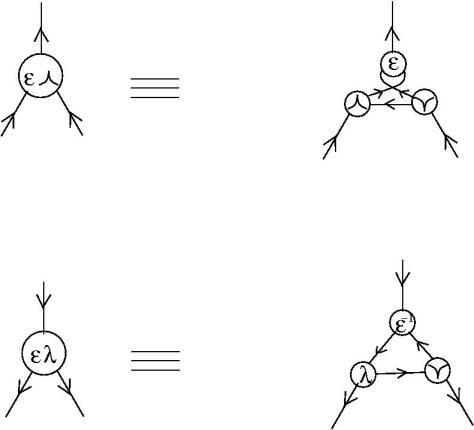On the upper part of the stele of Hammurabi’s code of laws we see Shamash giving to Hammurabi the sumerian royal insignia [source]:
The royal insignia are not a 1 and a 0, as speculated by Neal Stephenson in Snow crash, but the “holy measuring rod and line“, which is a me, i.e [source]
Another important concept in Sumerian theology, was that of me. The me were universal decrees of divine authority. They are the invocations that spread arts, crafts, and civilization. The me were assembled by Enlil in Ekur and given to Enki to guard and impart to the world, beginning with Eridu, his center of worship. From there, he guards the me and imparts them on the people. He directs the me towards Ur and Meluhha and Dilmun, organizing the world with his decrees. Later, Inanna comes to Enki and complains at having been given too little power from his decrees. In a different text, she gets Enki drunk and he grants her more powers, arts, crafts, and attributes – a total of ninety-four me. Inanna parts company with Enki to deliver the me to her cult center at Erech. Enki recovers his wits and tries to recover the me from her, but she arrives safely in Erech with them. (Kramer & Maier 1989: pp. 38-68)
A me for space. A program for using space.
_____________________
This is a good introduction to the main subject of this post. My main interest lies into understanding “computing with space”, which is a (more general?) form of computing (than the one covered by lambda calculus), based on some variant of graphic lambda calculus. In this formalism we see trivalent graphs, subjected to graph rewrites. Some of these graphs can be associated to lambda calculus terms, i.e. to programs. Other graphs can be associated to emergent algebras, which, I claim, are the natural house of computing with space. They are programs for using space, they are mes for space, which you (or your brain, hypothetically) may use without appeal to geometric expertise, as Koenderink claims in Brain a geometry engine that the visual brain does.
This is a rather different image about what space is, than the one offered by physicists. Think about space in terms of universal programs for using it, instead about space as made by points, or as a smooth of fractal passive receptacle.
The graphic lambda calculus has to be modified in certain ways, which I shall explain in this and later posts, as it happened with the chemical concrete machine, which is another modification of graphic lambda calculus, Turing universal, which expresses programs (lambda calculus terms) as molecules and graph rewrites as enzymes.
The strangest, but possibly the most powerful feature of these graphic languages is that they don’t use names and they don’t need evaluations for being able to perform reductions (i.e. program executions). This feature makes them good candidates for trying to use them as models of brain mechanism, because in no biological brain you will find physically implementations of names, alphabets or evaluations in the CS sense.
_____________________
Enough with the controversial claims. Concretely, the graphic formalism which I want to develop is already sketched in the following posts:
and in the series
- Dictionary from emergent algebra to graphic lambda calculus (I)
- Dictionary from emergent algebra to graphic lambda calculus (II)
- Dictionary from emergent algebra to graphic lambda calculus (III)
The elementary gates, or nodes, of the formalism I am looking for will be (expressed in terms of graphic lambda calculus, but really taken afterwards as fundamental, not derived)
Add to these the fan-in and fan-out gates from the chemical concrete machine.
The main move is the – beta move, (see a proof for this move in the graphic lambda calculus formalism, in the post Better than extended beta move )
which combines the graphic beta move with the move R2 of emergent algebra inspiration.
In few words, the “me for space” which I propose is a deformation of the chemical concrete machine formalism with a scale parameter.



The property described as “that they don’t use names and they don’t need evaluations for being able to perform reductions” is what may be considered as “location independence”. The only dependence that remains is that of function: So long as a function (such as a physical process) is available in some place that can be used to “run” the program, then it does not matter where/when that place is.
A name might be considered as merely a way of allowing for a call of some particular function… If I yell in a crowded room: “Hey you (asshole)”! There is a good chance that some person in the room will perform that function (of being an (asshole) for me).
Right, but because of two reasons: there is a room you share with others, and is not occupied by deaf and blind non English speakers.
(There is also the problem of “function”, because in lambda calculus without eta reduction you don’t have functions, because eta reduction says something along the idea that if fx=gx for any x then f=g. But you use “function” in a more general, semantic way.)
I marked this for needing further explanations, I don’t have them now, excepting this: in any crowded room you yell “asshole” there will be somebody performing that function, but there is no way, embedded in your “yelling program”, to know who will reply before actually yelling.